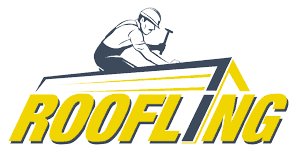Repointing is one of the more necessary types of roof work, especially right before storm season hits. It is a roof repair process that fixes the ridge caps, pointing, and bedding on your roof.
If all of that seemed foreign to you, don’t worry⎯you’re not alone. Here are some explanations:
What is Ridge Capping, Bedding, and Pointing?
A ridge cap is a special type of tile that covers the intersection between the edges of your roof tiles. It is usually situated at the highest point of your roof. The ridge cap effectively seals any crevices on your roof tiles and prevents water from seeping inside of them.
Ridge caps are attached to your roof through bedding and pointing. Bedding is a mixture of mortar, sand, and/or cement that is applied to the ridge cap like glue so that it sits firmly in place. Pointing is a flexible material for sealing the joints between the ridge cap and surrounding tiles.
Why Do You Need Roof Repointing?
The ridge cap, like any part of your roof, will be subject to normal wear and tear from the elements. It is one of the most susceptible areas of your roof, and usually the first one to get damaged.
A clear sign you’re due for a repointing is by inspecting the pointing and bedding of your ridge cap. Early signs include pointing that’s beginning to crack or chip away. As the pointing peels away, more of the bedding is exposed and starts to deteriorate as well.
Repointing replaces the pointing and bedding of your ridge cap, making it feel brand new again.
However, it’s not always easy to determine if you need repointing. The pointing is easy enough to identify, but the bedding usually isn’t. Here, it’s worthwhile to get the services of a roofing contractor like Roofling. Such companies can inspect and know if your bedding needs a replacement.
How Repointing is Done
First, the existing bedding and pointing are removed to make way for repairs. A ridge rack is used to help support the ridge cap and keep it straight.
Bedding is then applied to the areas that the ridge cap will cover. This bedding is a mixture of roofers’ loan and cement at a 3:1 ratio. It’s important that the bedding is trowelled properly so that the pointing will later have a stable surface on which to stick. The bedding is then allowed to dry up properly.
The pointing is then applied to the dried up bedding, as well as the collars where the ridges intersect. The pointing is applied at a thickness of around 3–5 mm. The final step is to make sure it is trowelled and smoothened to make the finish as seamless as possible with the rest of the roof.
As you can see, repointing is not a complicated process, but one that needs an expert touch. For your repointing or other roof repair needs, why not get a professional like Roofling?

